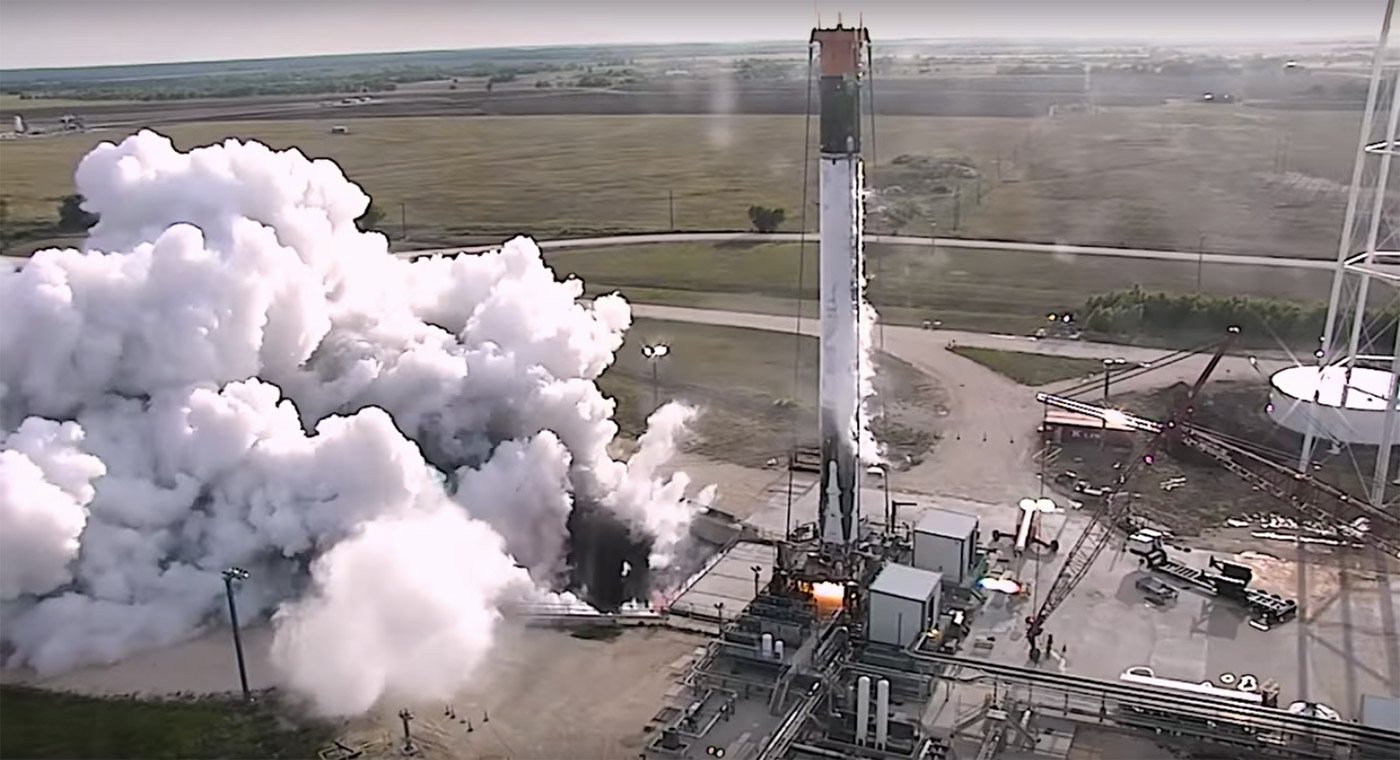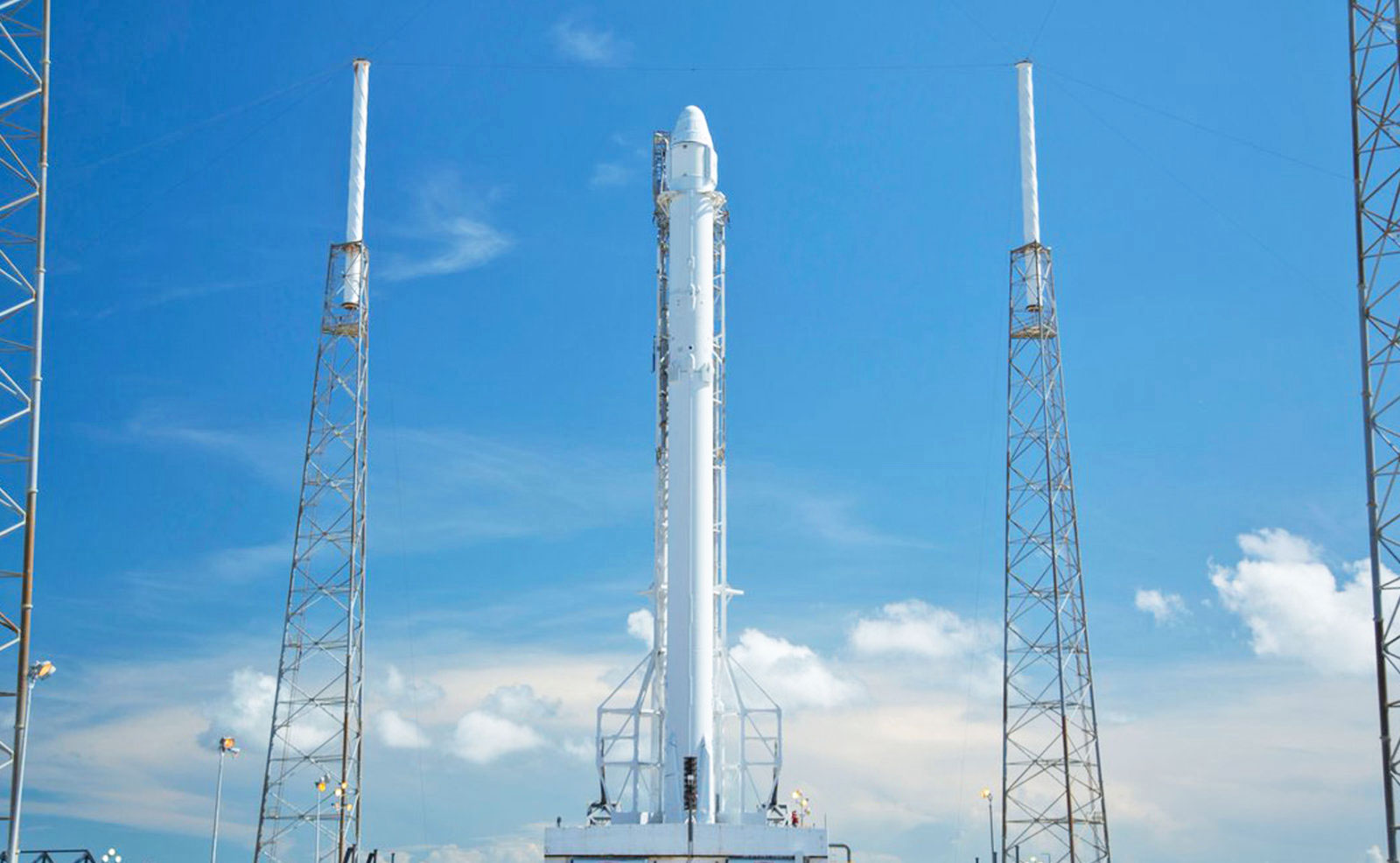
SpaceX is going to be transporting its space operations to a new facility in Port Canaveral in Florida. Its refurbished Falcon 9 rockets will find their rightful place there amidst the technological...
 SpaceX is getting ready to launch one of the rockets it relanded to prove they're truly reusable. In fact, it just finished test firing one of them at its Texas development facility. The first-stage booster burned for a total of 2 minutes and 30 seco...
SpaceX is getting ready to launch one of the rockets it relanded to prove they're truly reusable. In fact, it just finished test firing one of them at its Texas development facility. The first-stage booster burned for a total of 2 minutes and 30 seco...
 What's better than watching one of SapceX's Falcon 9 reusable rockets land? Watching three of them land. At the same time! Okay, that spectacle isn't here quite yet, but Elon Musk's rocket company is working on it: SpaceX recently announced that it's...
What's better than watching one of SapceX's Falcon 9 reusable rockets land? Watching three of them land. At the same time! Okay, that spectacle isn't here quite yet, but Elon Musk's rocket company is working on it: SpaceX recently announced that it's...

Get your rocket fuel in style with the Rocket Fuel Coffee Drip. This rocket shaped coffee dripper sits atop your mug; put a filter and grounds in, then pour in some hot water to make out of this world coffee. It’s not rocket science, although it kinda is. Ideal for making a single cup of coffee while pretending you’re an astronaut. You could even be one of those trendsetters who puts butter in their coffee (really, it’s a thing now. Google it.) More fun than a k-cup and more eco-friendly too.
![]()
Mornings are a Blast with this Rocket Shaped Coffee Dripper
Check out our Craziest Gadgets Shop for unique gifts!
We've been watching as the SpaceX Grasshopper's leap has grown higher and higher with each successive launch (and landing!), and the rocket's flights never fail to impress. The reusable spacecraft's latest test is no exception: this time, the 'hopper sailed past its previous 840 feet record, stopping at 1,066 feet. According to the company, the launch had a "more precise" landing thanks to new sensors that measure distance between the ground and the vessel. It shows. The touch-down is both noticeably smoother than previous efforts and drama free compared to Russia's explosive incident in Kazakhstan. The private spaceflight company's latest video is after the break -- do yourself a favor and watch it in HD.
Filed under: Science
Source: SpaceX (YouTube)
A unmanned Russian Proton-M rocket exploded moments after leaving the Baikonur Cosmodrome in Kazakhstan today, destroying its payload of three satellites intended for Russia's Glonass GPS system. Fortunately nobody was injured, but local news service Interfax is reporting that nearly 500 tons of fuel from the craft has contaminated the crash site. There's no word on what caused the disaster, but this model's recent history is fraught with equipment failures -- so if you'd like to see the latest disaster (spoiler: explosions), the video resides after the jump.
Via: The Verge

By midday Friday you’re stress level is probably through the roof. And the radio playing “Everybody’s Working for the Weekend” for the 7th time today isn’t helping. You don’t want to work, you just want to bang on your drum all day. Well you still have to take the morning train, work from 9 to 5 and then, maybe you can slam your fist down on a Desktop Stress Rocket to ease the pressure. Luckily it shoots straight up and not out at your co-workers or boss, so you can work hard for the money and do it all over again on another manic Monday.
Being geeks doesn’t mean we only care about gadgets. Yeah, we’re called OhGizmo!, but if you haven’t noticed, we’re adjusting our editorial focus to encompass more than consumer electronics; geek culture and esoteric products are also fair game. So is science! And so are awesome videos like the one above. It’s a really interesting video made by one Ben Krasnow featuring a home-made acrylic hybrid “rocket” that lets you see what goes on inside as the gases burn. In the 5 minutes the video takes, you’ll discover that the device doesn’t actually contain any fuel: the structure of the rocket is itself the propellant.
It’s cool to watch. At least we thought so.
VIA [ Geekosystem ]
NASA has shown just what it can do with the short window of science allowed by its "sounding" or sensor-equipped suborbital rockets -- having taken the sharpest pictures ever of the sun's corona. A 460-pound telescope called the High Resolution Coronal Imager (Hi-C) was lofted for about 10 minutes into space, ample time for its mirrors to capture over 150 images of the solar fringe at 16-megapixels each, before parachuting back to earth. The scope shot exclusively in a sun-friendly high ultraviolet range and used innovative new optics consisting of an array of mirrors, allowing it to resolve the sun down to 135 miles. That bested the previous champ, NASA's own Solar Dynamics Observatory, with almost five times the magnification. For maximum effect, the space agency took advantage of an unusually high amount of solar activity to focus on a large, active sunspot. To see the results in glorious multihued HD, check the video after the break.
Filed under: Science
Visualized: Telescope aboard suborbital NASA rocket takes clearest ever images of sun (video) originally appeared on Engadget on Mon, 23 Jul 2012 09:23:00 EDT. Please see our terms for use of feeds.
Permalink Space.com |
Space.com |  NASA | Email this | Comments
NASA | Email this | Comments Forty-year old tech taking astronauts into space? Sadly, that's been the current state of our space program. But in the spirit of making one extra, giant leap for mankind, our nation's best and brightest aeronautic minds have been quietly working on a propulsion system designed to power the SLS and its Orion spacecraft payload deeper into the cosmos. NASA's been testing these next-gen J-2X rockets since last year, proving their ability to "[achieve] full flight-duration firing of 500 seconds" at sea-level and, now, in a series of second round testing, the engines will be put through their paces at high altitudes. The first of 16 planned tests are scheduled to kick off this Wednesday at the agency's Stennis Center in Mississippi and should run through to year-end. Check out the official presser after the break for a fuller breakdown of this evolution in galactic travel.
NASA preps J-2X rocket engines for second round testing, SLS creeps closer to 2017 liftoff originally appeared on Engadget on Wed, 25 Apr 2012 04:38:00 EDT. Please see our terms for use of feeds.
Permalink | | Email this | Comments